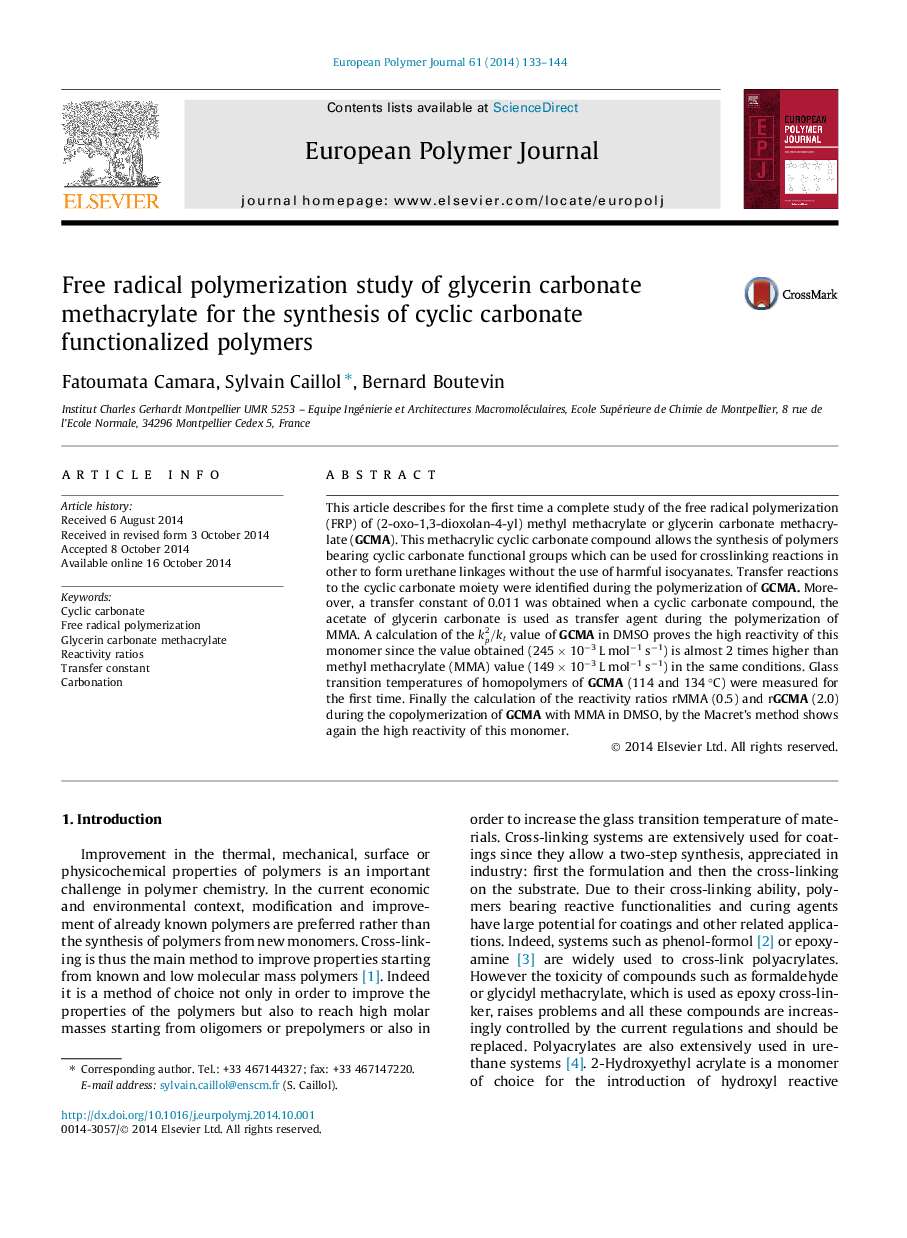| Article ID | Journal | Published Year | Pages | File Type |
|---|---|---|---|---|
| 1398009 | European Polymer Journal | 2014 | 12 Pages |
•Two synthesis methods of glycerin carbonate methacrylate (GCMA) were compared: carbonation of and transesterification.•Homopolymerization and copolymerization of GCMA was studied.•Transfer constant of GCMA was determined.•Polymerizability constant was determined.•Copolymerization ratios of GCMA and MMA was determined.
This article describes for the first time a complete study of the free radical polymerization (FRP) of (2-oxo-1,3-dioxolan-4-yl) methyl methacrylate or glycerin carbonate methacrylate (GCMA). This methacrylic cyclic carbonate compound allows the synthesis of polymers bearing cyclic carbonate functional groups which can be used for crosslinking reactions in other to form urethane linkages without the use of harmful isocyanates. Transfer reactions to the cyclic carbonate moiety were identified during the polymerization of GCMA. Moreover, a transfer constant of 0.011 was obtained when a cyclic carbonate compound, the acetate of glycerin carbonate is used as transfer agent during the polymerization of MMA. A calculation of the kp2/kt value of GCMA in DMSO proves the high reactivity of this monomer since the value obtained (245 × 10−3 L mol−1 s−1) is almost 2 times higher than methyl methacrylate (MMA) value (149 × 10−3 L mol−1 s−1) in the same conditions. Glass transition temperatures of homopolymers of GCMA (114 and 134 °C) were measured for the first time. Finally the calculation of the reactivity ratios rMMA (0.5) and rGCMA (2.0) during the copolymerization of GCMA with MMA in DMSO, by the Macret’s method shows again the high reactivity of this monomer.
Graphical abstractFigure optionsDownload full-size imageDownload as PowerPoint slide
